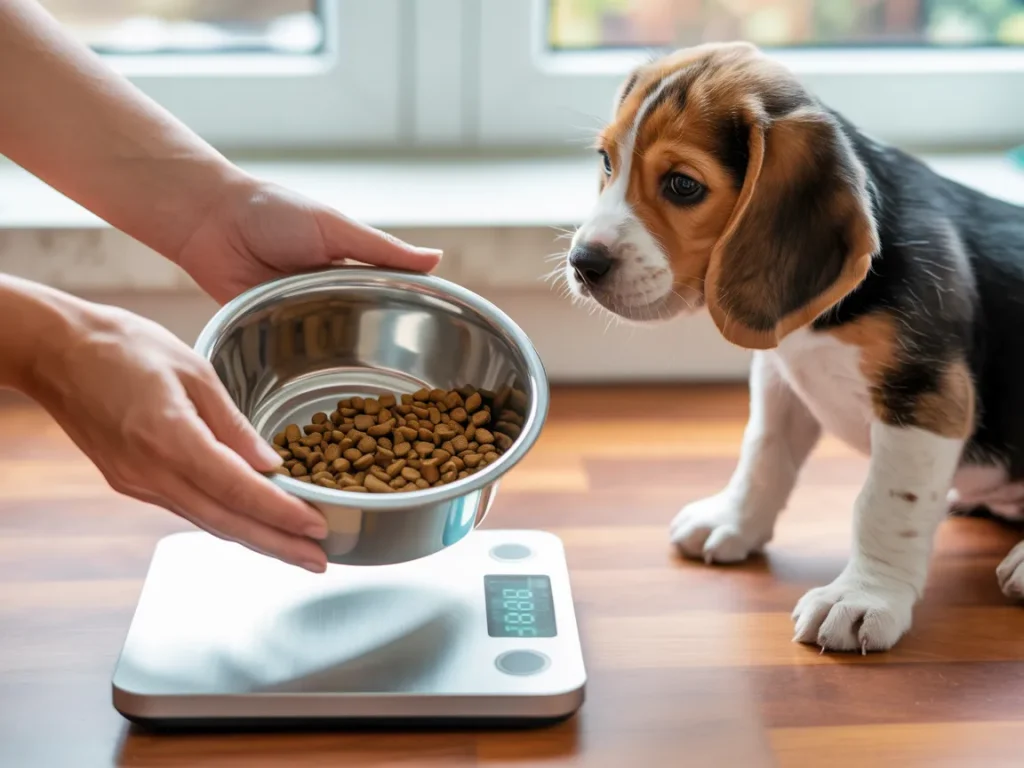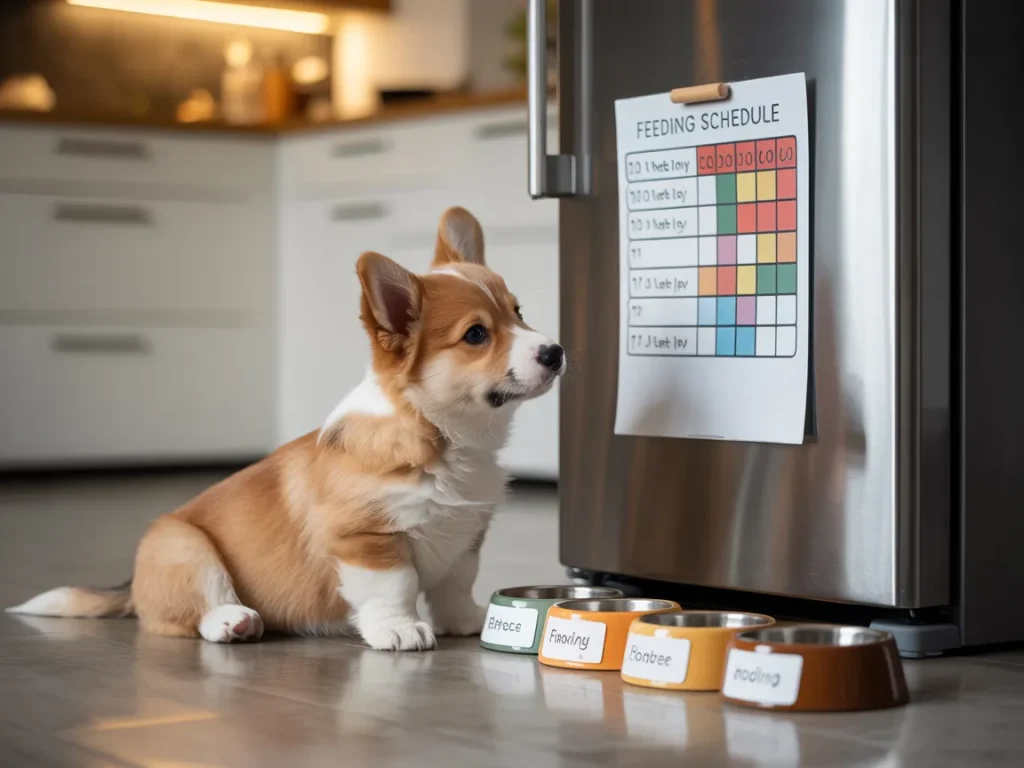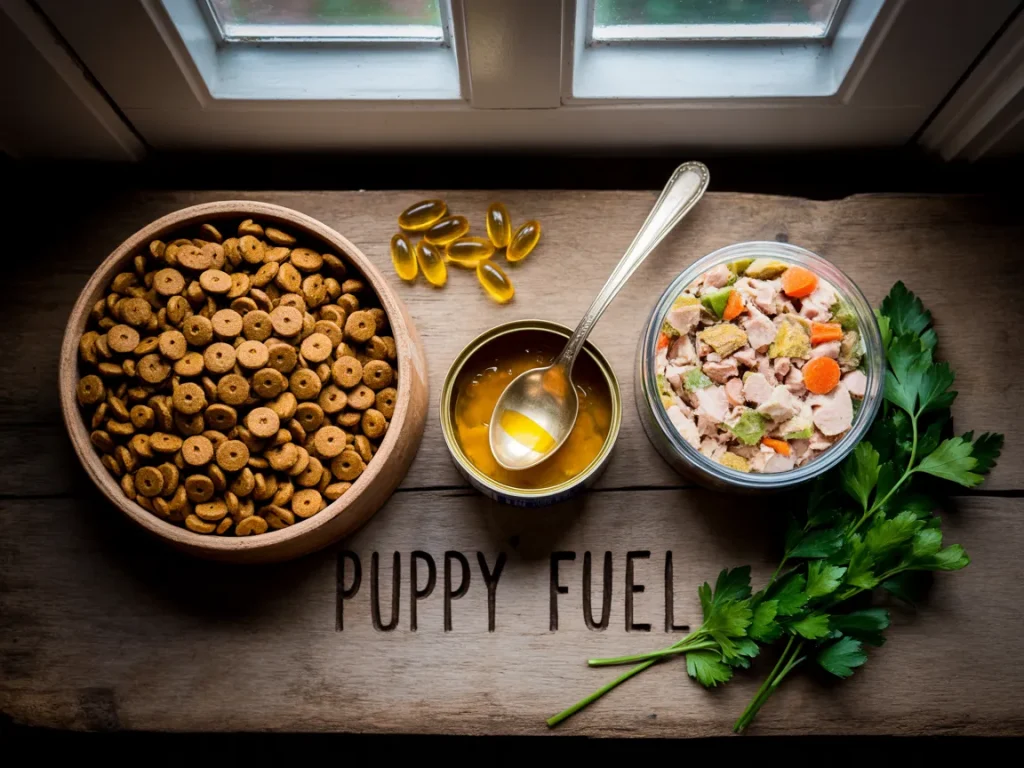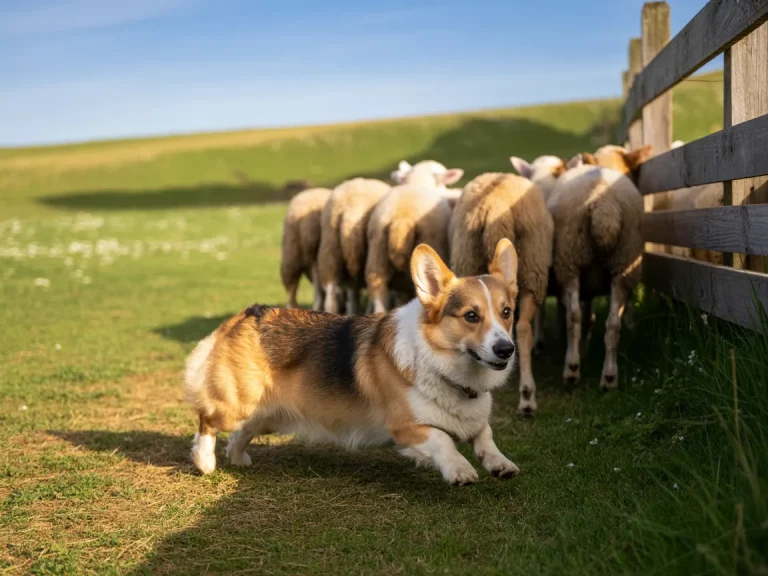Bringing a puppy home feels a bit like unwrapping the world’s best present—one that wiggles, squeaks, and occasionally chews your shoelaces. But between those “awww” moments and the late-night potty breaks, you’ve got one job that towers above the rest: fueling that tiny body for a lifetime of zoomies and couch cuddles. Whether your new roommate is a husky built like a snow-ready SUV or a pint-sized pomeranian with the attitude of a rock star, the first 12 months set the tone for every wag that follows.

Why Nutrition Matters for Puppies
Puppies grow faster than a rumor in a dog park. One week they’re all paws, the next they’ve shot up like a sunflower after a rainstorm. To keep bones sturdy and coats gleaming—think “well-tailored suit” in fur form—they need protein, healthy fats, calcium, and phosphorus in just-right ratios. Overdo the calcium and your future Great Dane may develop joints that creak like an old porch swing. Skimp on calories and a teacup Yorkie can fade faster than last season’s chew toy. If you want a deeper dive into those numbers, the WSAVA Global Nutrition Guidelines lay them out in plain English.
Food shapes behavior, too. Shared meals teach patience (“sit, wait… okay!”) and turn your hands into dispensers of good things, not objects to guard against. Stick to a routine and you’ll dodge the dreaded sugar crash that often shows up as hyperactive zoomies right when you’re trying to join that 9 a.m. video call.
How Much to Feed: Understanding Puppy Portion Sizes
Think of calories as Lego bricks: stack too many and you build a wall of pudge; too few and your pup’s growth project ends up half-finished. The guidelines in the American Kennel Club’s Puppy Feeding Fundamentals start you off, but always check the chart on your own kibble bag—yes, the tiny print you usually ignore—and tweak from there. Weigh your pup weekly (the bathroom scale and a laundry basket work in a pinch) and adjust portions by about 10 – 15 % every couple of weeks.
Body shape tells the real story. Look down: do you see an hourglass waist or a furry sausage? From the side, there should be a gentle tummy tuck, not a beer belly. And because puppies are hopeless optimists around food, measured meals beat free-feeding every time. A gram scale removes the guesswork—and your beagle’s “starving” eyes will survive the disappointment.

Feeding Schedule by Age
Every pup marches to their own tummy drum, but this timeline keeps most on track.
6 – 12 Weeks: Four Meals a Day
Remember college dorm life, where snacks happened every few hours? That’s your puppy now. Four mini-meals—say 7 a.m., 11 a.m., 3 p.m., and 7 p.m.—keep energy steady and training sessions sharp. If kibble looks like gravel to tiny teeth, soak it in warm water for ten minutes. Bonus: hydration without the sloshing water bowl mess.
3 – 6 Months: Three Meals a Day
Baby teeth are in, confidence is up, and your corgi might start auditioning for a food-theft reality show. Shift to breakfast, lunch, and dinner. Keep the kitchen drama down by asking for a calm sit before you set the bowl down—manners now save headaches later.
6 – 12 Months: Two Meals a Day
By six to eight months, most medium and large breeds can coast on two square meals, morning and evening. Toy breeds may cling to that midday bite until their first birthday, and that’s okay. Aim for a 12-hour overnight gap; it gives the gut a breather and helps keep those pearly whites cleaner than a chew toy straight out of the package.
Feeding isn’t just science; it’s a daily love letter in kibble form. Get the portions right, stick to a rhythm, and watch your little fur comet grow into the healthy sidekick you’ve been dreaming about. Questions? Send ’em my way—there’s always kibble in the bowl and room for another dog tale.

Choosing the Right Food
So you’ve nailed the schedule—now what goes in the bowl? Picking a puppy diet can feel like browsing a never-ending cereal aisle. Let’s break it down so you can shop with the confidence of a seasoned trainer strolling into a pet-food expo.
Kibble vs. Wet vs. Fresh
Kibble: Think of dry food as the sensible sedan of dog cuisine—budget-friendly, shelf-stable, and those crunchy bits double as tiny toothbrushes. Scan the label: meat or fish should hold the pole position, not “mystery meat by-products.” A bonus point if you spot DHA, the brain-boosting fatty acid that turns your little rascal into the Einstein of obedience class.
Wet food: This is the gourmet convertible—irresistible aroma, extra moisture, but calorie-dense enough to pad a waistline. Instead of diving in head-first, swirl a spoonful into the kibble for flavor fireworks without overfeeding.
Fresh or gently cooked: Picture meal-prep Sunday—now for dogs. Pre-portioned packs arrive at your door with human-grade ingredients so fresh you’ll wonder if your pup eats better than you. They cost more, but if you love the idea of “farm-to-food-bowl,” it might be worth the splurge.
Ingredient Quality Over Marketing Hype
Ever seen a bag shout “holistic” in neon letters? Marketing loves big words. Your secret weapon is the tiny AAFCO statement—look for “growth” or “all life stages.” Grain-free isn’t a magic ticket; in fact, some grain-free recipes have been linked to heart issues, and the FDA investigation into diet-related dilated cardiomyopathy spells out why. Unless your vet waves the allergy flag, whole grains like oats and brown rice add fiber without drama.

Breed‑Specific Considerations
Big paws? Tiny paws? One-of-a-kind personality? Food needs tweak with the breed.
- Golden retriever: These fluff rockets grow fast. Pick a large-breed puppy formula with tempered calcium (around 1.2 – 1.5 %) to dodge joint woes.
- Pomeranian: Small dog, big energy. Seek micro-kibble that packs 50 – 55 kcal per pound so your pocket lion keeps roaring.
- Corgi: Royal-but-rugged. Calories add up on that long spine, so aim for moderate fat (about 12 – 14 %). Imagine dressing a sausage in a sweater—you want cozy, not tight.
- Beagle: Their noses say “buffet!” Puzzle feeders slow the chow parade; toss in steamed carrots for low-calorie crunch.
- Maltipoo: Silky coats need omega-3s (EPA and DHA). Fish-oil-fortified recipes give that “just-left-the-groomer” shine.
Switching foods? Go slow—25 % new food for two days, then 50 %, 75 %, and finally all new by day seven. Your carpet will thank you.

Common Feeding Questions & Mistakes
Is “puppy chow” the same as adult dog food?
Short answer: Usually, no. The brand Puppy Chow™ meets growth needs, but the slang “puppy chow” gets thrown around for any young-dog kibble—some of which won’t cut it. Double-check the bag for a bona fide growth statement. And while we’re at it, that sugary human snack called “puppy chow Chex mix”? Chocolate plus powdered sugar equals an ER visit, not a treat.
Feeding your puppy isn’t just about full bellies—it’s about building a future of happy tail wags and healthy play bows. Armed with the right food and a dash of common sense, you’ll keep that bowl—and your pup—brimming with good vibes.
Should I Add Supplements?
Tempted to sprinkle a little “health magic” on top of each meal? Hold that shaker. Reputable puppy formulas are already multivitamins in disguise—every kibble nugget carries the micronutrient payload your youngster needs. Add extra calcium or a random multivitamin and you might tip things into the danger zone faster than a Lab can find the litter box. The only time supplements make sense is when your vet writes the prescription—say, glucosamine for a giant-breed pup whose joints are talking back earlier than expected. Otherwise, the best supplement is… just solid food.
My Puppy Skips Meals—Should I Worry?
Puppies can be drama queens. Teething hurts, heat waves zap appetites, and sometimes the neighbor’s cat is simply more interesting than breakfast. A skipped meal or two isn’t code red. Still, put a 20-minute timer on the bowl: eat now or it vanishes until the next scheduled feeding. Most pups learn the routine faster than you can say “sit.” Persistent pickiness, though? Time to phone the vet and rule out parasites or other gremlins. Better safe than hungry.
Raw Bones or No Bones?
Raw meaty bones—think chicken necks or turkey wings—are like nature’s toothbrush and mineral bar combined. They can scrape plaque and deliver calcium, but they also carry a side of bacteria no one ordered. If you’re set on raw, freeze the bones for 72 hours to knock down the germ count, thaw in the fridge, and supervise every chew like a lifeguard on duty. Cooked bones? Absolutely not. They splinter into dental disasters and wallet-draining ER visits.

Putting It All Together
Feeding a puppy is part science lab, part detective work. Pick a complete diet, weigh each portion (your kitchen scale just got promoted), and feed on a schedule that suits your pup’s age. Pair meals with a quick “sit, wait” drill to sharpen manners, and jot down weekly weigh-ins so tiny fluctuations don’t morph into thunder thighs. When nutrition, routine, and observation link arms, you’ll pave the road for a lifetime of sleek coats, strong joints, and tail-wagging vet checkups.
Disclaimer: This article is for informational purposes only and does not constitute professional veterinary advice. Always consult a licensed veterinarian or certified dog trainer regarding the specific needs and health of your dog.





